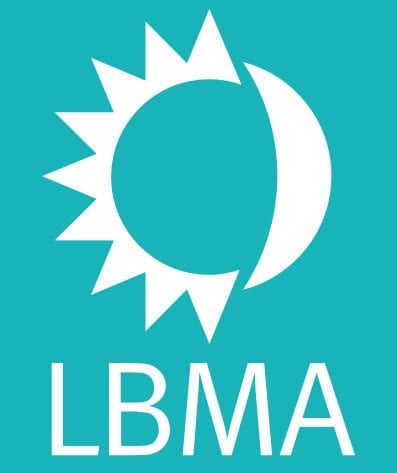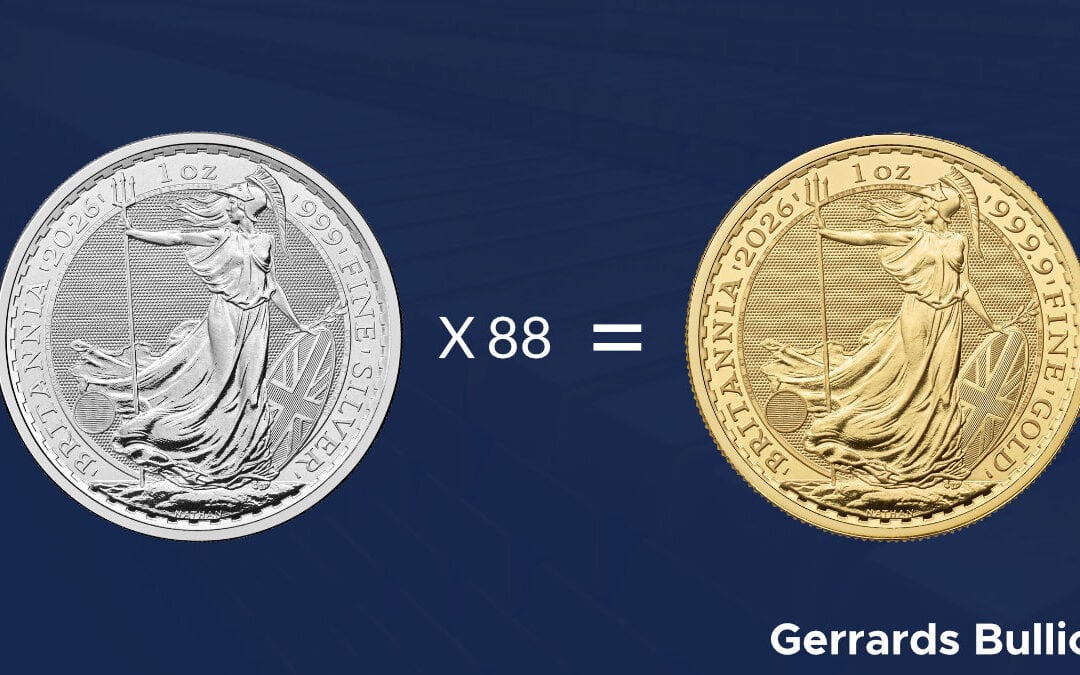The gold/silver ratio is one of the classic benchmarks in the precious metals market, frequently analysed by investors to assess relative value and formulate portfolio strategies. Its evolution reflects changing economic landscapes, technological shifts, and investor psychology- making it especially relevant in the current climate of 2025.
Current Gold/Silver Ratio
In September 2025, the gold/silver ratio is approximately 88:1. That is, 88 ounces of silver are needed to purchase a single ounce of gold. This level is above historic norms and underscores a significant valuation gap, with silver trading at a substantial discount to gold. Such a high ratio historically indicates robust potential for silver outperformance, particularly when market corrections or economic expansion fuel renewed investor interest in undervalued assets.

Historic Values
Governments across history have used the gold/silver ratio to frame monetary systems. Ancient Rome once fixed the ratio near 12:1, the U.S. Coinage Act of 1792 set it at 15:1, and through most of the 20th century, it hovered around 47:1. These fixed systems gave way in the late 20th century to free-market pricing, and the ratio has since seen dramatic spikes. Notable peaks include 98:1 in 1939 and the record-setting high of over 125:1 amid the global pandemic crisis in 2020. In recent years, it has regularly exceeded 80:1, often reflecting periods of stress in financial markets or rapid changes in industrial demand.
Investor Signals and Strategies
An elevated gold/silver ratio can act as a loud signal for investors. When the ratio is above 80:1, it often highlights a moment when silver is undervalued compared to gold. Historically, these extremes have been followed by powerful rallies in silver prices as investors shift their allocations, seeking to capitalize on the potential for a “catch-up” period. Investment strategy often involves overweighting silver during high ratio periods, rebalancing portfolios to increase exposure to the metal, and later rotating back to gold as the ratio normalizes. Conversely, low ratios have favoured gold as silver approaches parity.
Portfolio management guided by the gold/silver ratio remains popular with both institutional and private investors. Some choose to use the ratio for tactical swaps—exchanging silver for gold (or vice versa) in response to extreme ratio levels, while others build long-term positions with a focus on historical mean reversion. The current high ratio supports an increased allocation to silver, particularly given its potential for price acceleration in the event of normalization.
Industrial Demand and Its Impact
What sets the current period apart is the remarkable transformation of silver into an industrial metal. In 2025, more than 59% of silver’s total demand comes from industrial sectors – much higher than a decade ago. Silver is indispensable for solar photovoltaics, electronics, electric vehicles, medical applications, and the next generation of AI-related devices. Record global solar installations are driving demand, with solar panel manufacturing alone responsible for 17% of total silver consumption in 2024 – a dramatic increase from just 5.6% in 2015.
Industrial demand doesn’t just boost consumption; it fundamentally changes the market balance. Supply is struggling to keep pace: for the eighth consecutive year in 2025, the silver market faces a supply deficit, projected at over 200 million ounces. Silver mine output is constrained – about 70% of global silver comes as a byproduct of mining other metals, so price surges alone do not produce rapid supply responses. Recycling is increasing but still cannot fully offset the deficit.
The convergence of surging industrial demand, supply constraints, and persistent market deficits creates a “perfect storm” for silver prices, and therefore for the gold/silver ratio itself. If industrial demand continues rising (as projected by solar, electronics, and electrification trends), silver may eventually close the gap with gold -driving the ratio lower and rewarding those who position their portfolios accordingly.
Conclusion
The gold/silver ratio at elevated highs in September 2025 presents a compelling backdrop for precious metals investors. History suggests that such extremes offer strategic opportunities – especially as silver’s industrial role deepens and supply remains tight. For those willing to anticipate a return to historical means, overweighting silver in diversified portfolios may deliver substantial gains, both through market rebalancing and emerging technology-driven demand. In essence, the modern gold/silver ratio tells a story not only about monetary value but about the changing shape of our world and the critical role silver now plays within it.
Disclaimer: Investments in bullion products are not FCA regulated. The value of your investment can go down as well as up. Past performance is not indicative of future performance.





